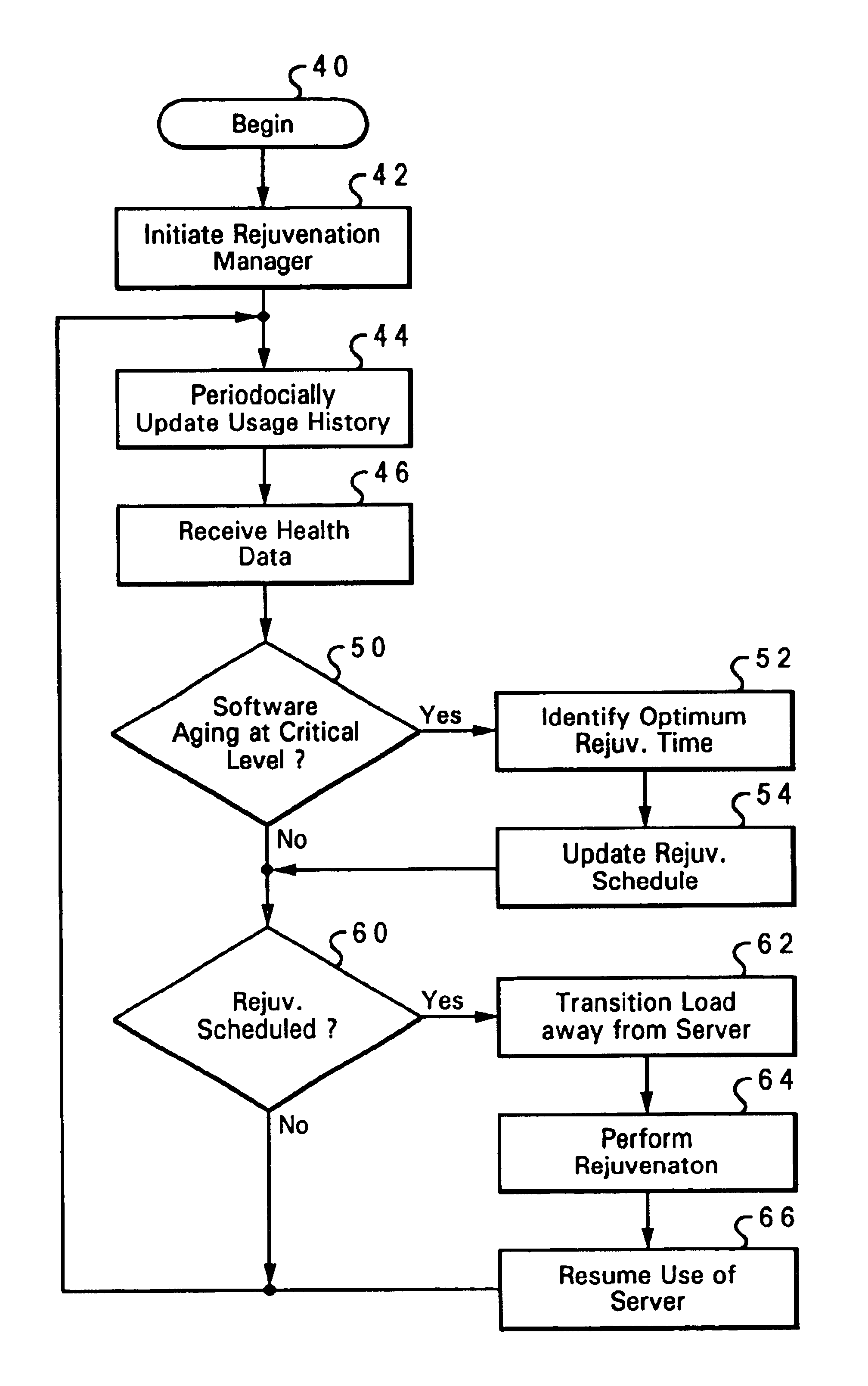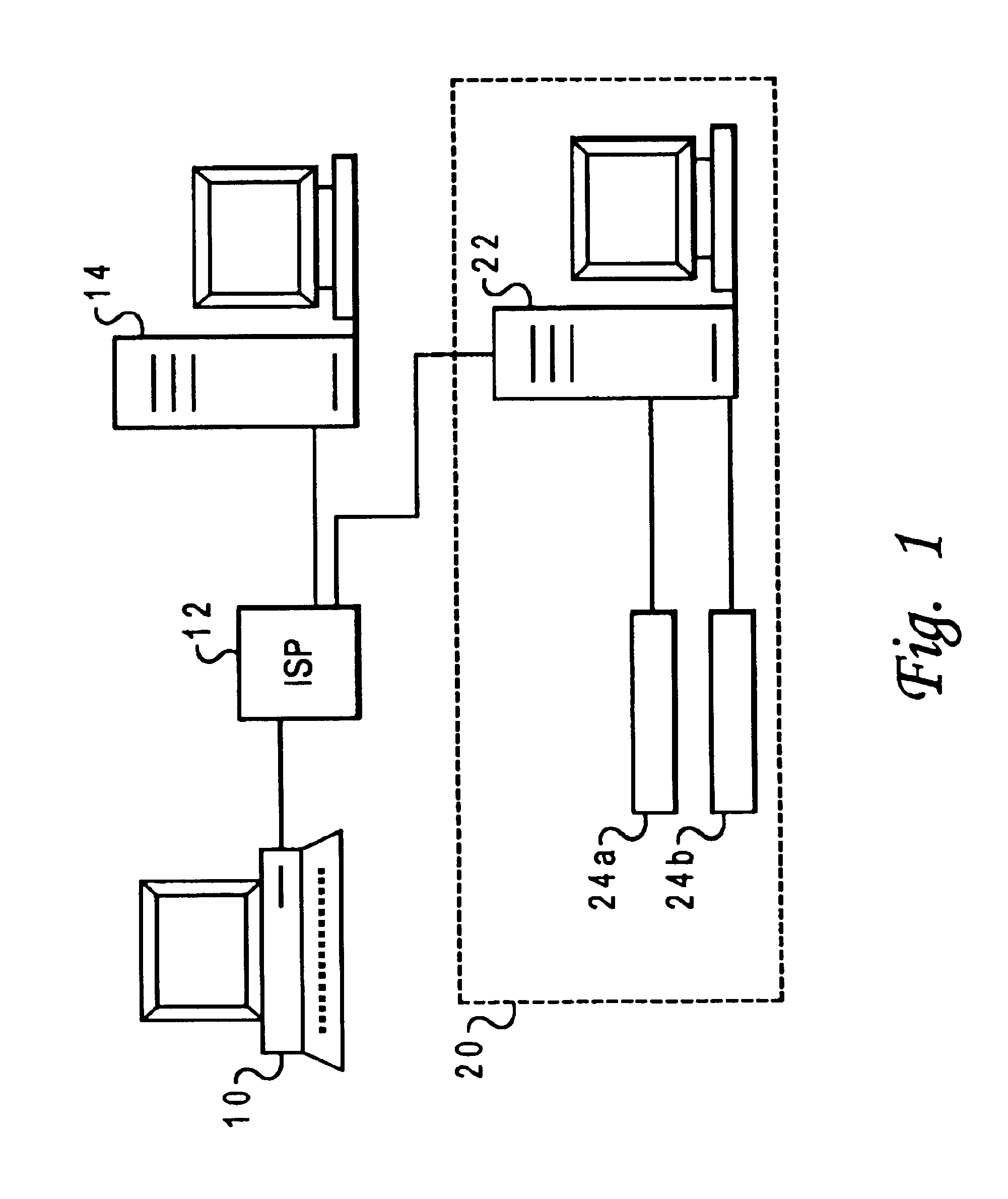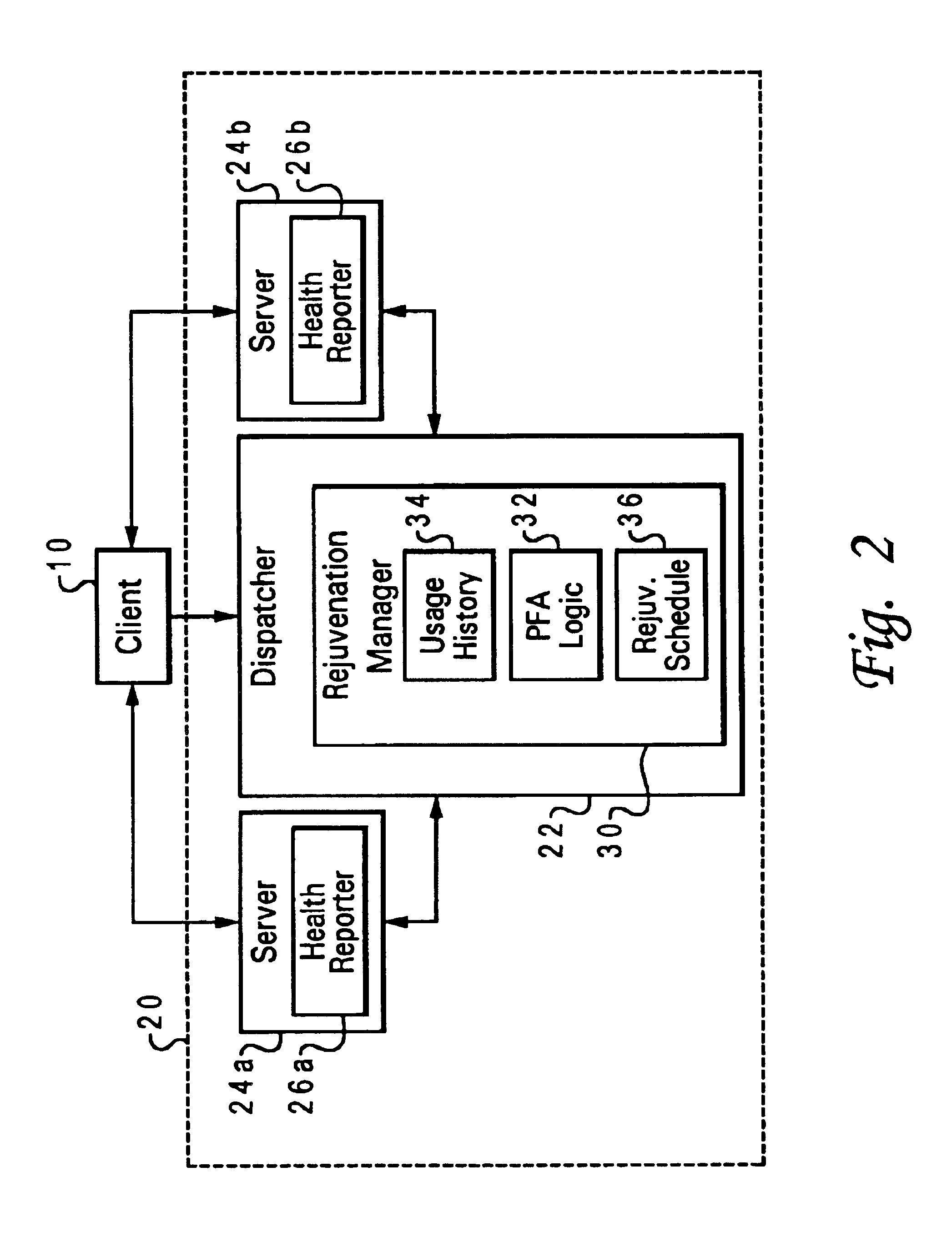System and method for performing automatic rejuvenation at the optimal time based on work load history in a distributed data processing environment
a data processing environment and automatic rejuvenation technology, applied in the field of computer systems, can solve the problems of increasing system configuration and maintenance requirements, failure of one or more server machines in a server cluster to not completely disable the operation of the rest of the server cluster, and colloquial data processing environments exis
- Summary
- Abstract
- Description
- Claims
- Application Information
AI Technical Summary
Benefits of technology
Problems solved by technology
Method used
Image
Examples
Embodiment Construction
The present invention is directed to automating maintenance responsibilities in a distributed data processing environment, particularly to performing automatic rejuvenation in a distributed data processing environment. The invention may be utilized to advantage in myriad types of computing environments where dispatching to an aggregate of processing entities or modules is used. Such environments include, without limitation, transaction processing, file serving, application serving, messaging, mail serving, and many others.
For example, transaction monitors (such as those known as ENCINA and TUXEDO) dispatch transactions to one of several database or transaction servers, depending on which database or transaction server has the lowest workload. Message queuing dispatchers (such as those in the family of message queuing dispatchers known as the MQSeries) distribute messages to one of a series of queue stores, depending on which queue store has the smallest queue size. A file serving fr...
PUM
 Login to View More
Login to View More Abstract
Description
Claims
Application Information
 Login to View More
Login to View More - R&D
- Intellectual Property
- Life Sciences
- Materials
- Tech Scout
- Unparalleled Data Quality
- Higher Quality Content
- 60% Fewer Hallucinations
Browse by: Latest US Patents, China's latest patents, Technical Efficacy Thesaurus, Application Domain, Technology Topic, Popular Technical Reports.
© 2025 PatSnap. All rights reserved.Legal|Privacy policy|Modern Slavery Act Transparency Statement|Sitemap|About US| Contact US: help@patsnap.com



